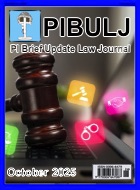Chaos Beats Causation: The Limits of Accident Reconstruction - Michael Brooks Reid, Temple Garden Chambers

17/10/25. Michael Brooks Reidcomments on the High Court’s approach to the neurosurgical evidence in the case ofMW (a child) v Wilkinson & Anor[2025] EWHC 2300 (KB).
Facts
A car vs pedestrian accident took place near a school causing a young child, ‘M’, to suffer life-changing injuries. At trial, the Claimant argued that even if the collision was unavoidable, M’s injuries would have been significantly reduced had the Defendant been driving at a lower speed (he was driving at around 20mph, the advisory speed limit). The Claimant relied on neurosurgical evidence which posited that a marginal reduction in impact speed would, on the balance of probabilities, have avoided the severe head injury M sustained.
Neurosurgical Dispute
The experts were both eminent neurosurgeons. The Claimant’s expert relied on generic statistical data from paediatric pedestrian studies showing a dramatic decrease in severe injury risk at speeds below 20 mph. He argued that even a 1-2 mph reduction would have altered the dynamics of the impact, giving M time to rotate his body, leading to a different—and less severe—injury profile. He asserted that, statistically, a child struck at such low speeds typically avoids significant head injury.
The Defendant’s expert rejected this as overly speculative. He highlighted that the...
Image ©iStockphoto.com/Lya_Cattel












![Appeal judge rules that credit hire company has no costs liability following a finding of fundamental dishonesty in personal injury case: RSA v. Fastrack Solutions Limited [2023] 4 WLUK 92 - David Bowden, Erimus Chambers](/content/images/resized/images/stories/carkeys_72_72.jpg)


